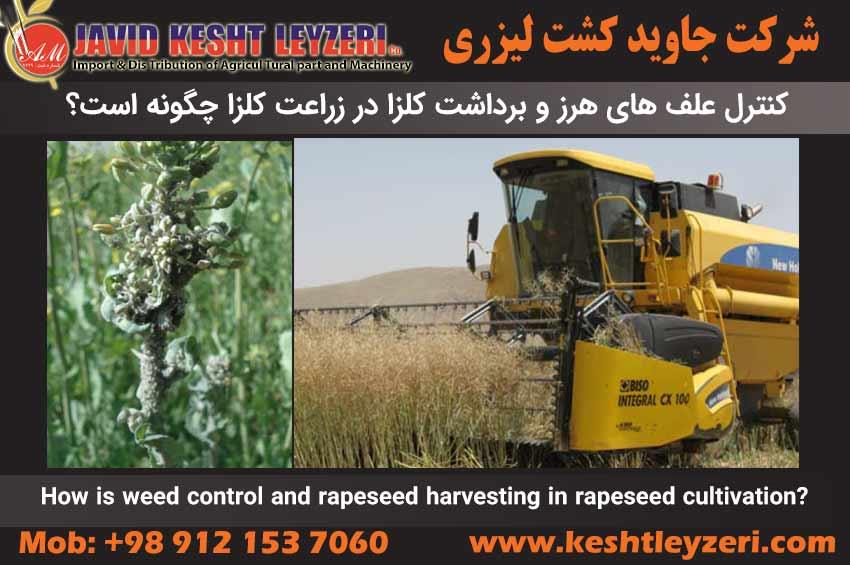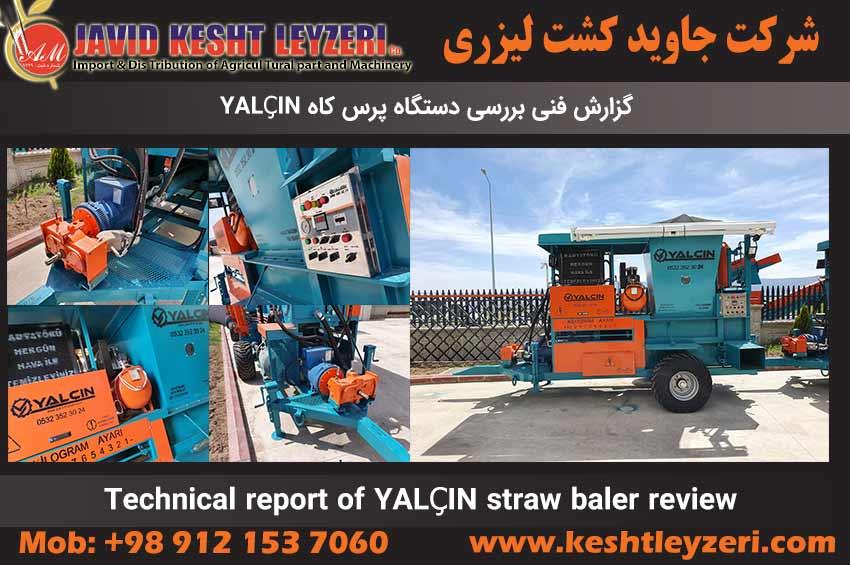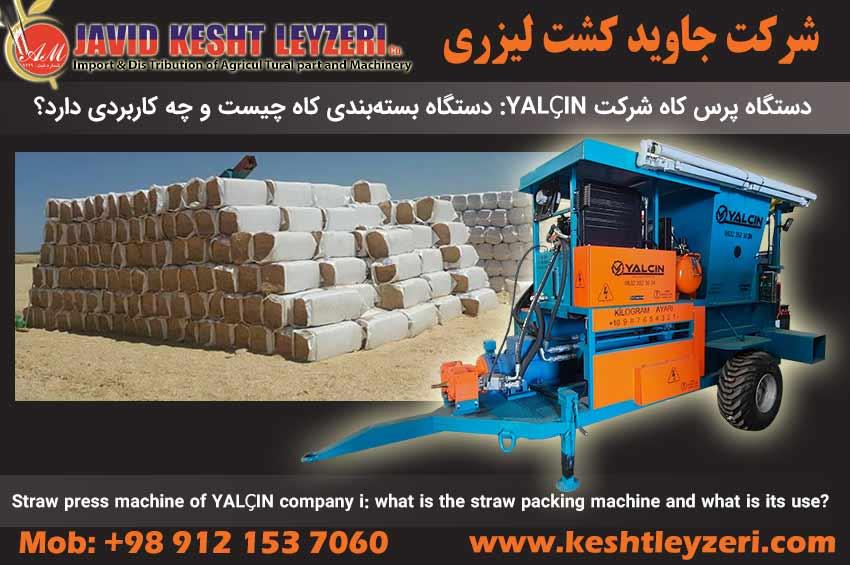
How is weed control in rapeseed cultivation?
javid keshtleyzeri Co.ltd
List of contents of this section:
When is the best time to deal with weeds?
What are the methods of weed control in rapeseed cultivation?
What is the prevention method for weed control for canola cultivation?
How to irrigate the field before preparing to plant canola for weed control?
What is the performance of the crop rotation method to control weeds in rapeseed cultivation?
What are the herbicides used in rapeseed cultivation?
What are the important points in the use of herbicides in rapeseed cultivation?
How does wax aphid damage rapeseed cultivation?
How does the pollinator beetle damage rapeseed cultivation?
How is rapeseed harvested?
How to buy rapeseed products?
In the following, the above contents will be reviewed.
When is the best time to deal with weeds?
Many crops are tolerant to weeds during their life cycle when they grow large enough to outcompete weeds. Also, early in the growing season, they are often very sensitive to the presence of weeds. In this situation, weed control is essential to prevent yield reduction and crop production. The critical life cycle for weed control in canola starts from the 2-4 leaf stage. At this stage of growth, due to the small size of the rapeseed plant and its growth rate, the presence of weeds causes a sharp reduction in the growth of rapeseed and weakens it. In this way, the young rapeseed plant is not able to grow sufficiently before the onset of winter cold and as a result, it cannot reach 6 to 8 leaves. It causes winter cold injury, and if it survives in the spring, it will flower at a lower height and number of branches, and the number of seeds per canola plant and field yield will be reduced.
What are the methods of weed control in rapeseed cultivation?
1- Prevention
2- Irrigation of the land before preparation for rapeseed cultivation
3- Crop rotation
1- What is the prevention method for weed control for rapeseed cultivation?
It provides the most basic, cheapest, and easiest method of controlling all types of weeds.
The concept of prevention is to prevent the entry of weeds into the non-contaminated area through the observance of agricultural hygiene.
Although there is less emphasis on prevention with the availability of effective herbicides and access to other control methods, the availability of effective and inexpensive tools reinforces that weeds can always be controlled after establishment.
2- How is the irrigation of the land before preparation for rapeseed cultivation for weed control?
Irrigating the land before preparing and planting canola is one of the best ways to control narrow leaf weeds in canola.
Irrigating the land one month before preparing the soil and planting canola, in addition to controlling wheatgrass, helps to control narrow leaf weeds such as judre and wild bulaf.
This method controls car weeds well and reduces the need to use herbicides effective on narrow leaf weeds.
Irrigation before planting canola causes the seeds to fall and create a more uniform surface in the field.
The growth rate of rapeseed increases due to the removal of weeds in the early stages of growth and increases the yield of the product.
3- How does the crop rotation method work to control weeds in rapeseed cultivation?
Crop rotation is a suitable method for planning and managing weeds in fields. This method plays an essential role in reducing pests, diseases, and weeds. Canola-wheat rotation is known as a favorable rotation program. This rotation not only increases the yield of wheat by 25%, but in the year when the land is devoted to rapeseed cultivation, it is possible to deal with narrow-leaved weeds such as wild oats and valley oats, which are difficult to control in wheat cultivation, by irrigation before planting. And then it provides plowing and the use of chemical poisons. Also, in the year when the land is dedicated to wheat cultivation, broadleaf weeds such as wild mustard can be easily managed using selective herbicides. This method, in addition to the increase in yield due to the reduction of competition with weeds, also reduces the population of weeds in subsequent crops. Crop rotation is considered as an important part of weed management, and the weed density in alternating cultivation is lower than in monoculture and the yield is also higher.
What are the herbicides used in rapeseed cultivation?
Herbicides used in rapeseed are divided into broad-leaf herbicides and narrow-leaf herbicides. These herbicides are capable of selectively controlling weeds in canola, without harming the canola plants, if the recommended application rate is followed and the correct timing is implemented. Considering that after rapeseed cultivation in the fall season, the temperature decreases and the growth rate of the rapeseed plant also decreases, and the physiological rapeseed stops as it approaches zero degrees Celsius. While narrow-leaved weeds continue to grow even in winter and compete with canola. Considering that the most damage to canola occurs in the 2-4 leaf stage, it is necessary to fight with narrow-leaf weeds in the canola field during this period.
Super Gallant herbicide is one of the effective herbicides in controlling narrow-leaved weeds in rapeseed. This herbicide has a good efficiency with a lower consumption than other narrow-leaved herbicides.
In order to reduce the consumption of chemical poisons and also to reduce the cost of production, care must be taken in selecting herbicides and the necessity of spraying weeds that have high competitive power. In priority, weeds with high competition power should be identified and in case of high density, spraying should be done. At the time of spraying with Super Gallant herbicide, the ambient temperature should be at least 2 degrees Celsius at night and less than 10 degrees Celsius during the day.
Celsius, otherwise the effectiveness of the herbicide will decrease.
What are the important points in the use of herbicides in rapeseed cultivation?
1. It should be done before using herbicides and asking for advice from the experts of the village centers.
2. In fields that have been damaged due to climatic conditions, pests, and moisture stress, spraying should be avoided until the climatic conditions normalize.
3. Herbicide consumption should be done according to the recommended amount.
4. Before any foliar application in a canola field, the sprayer should be flushed with a detergent, as canola plants are extremely sensitive to Tofordi residues inside the tank and sprayer hoses.
How does wax aphid damage rapeseed cultivation?
By sucking sap from all parts of rapeseed, it causes weakness of the plant and twisting in the leaves, and the height of the plant remains short in the infected spots. This action causes non-inoculation of flowers, small seeds and disturbance in the mechanized harvesting of the product. Also, wax aphid can transmit viral diseases. The population of wax aphid increases rapidly from the edge to the inside of the field if the field is infected. This aphid appears in hot and temperate regions from March and in cold regions from mid-April. At the time of spraying, in order to preserve beneficial insects, bees and also to effectively control the pest, it is recommended to consult with the experts of agricultural jihad.
When an aphid-infected plant is observed, spraying is necessary. It is usually recommended to do two spraying steps, once before flowering and again after flowering. During flowering, especially in the first 14 days, it is better to avoid using any chemical poisons due to its adverse effects on flowering and performance. Repeating spraying at the end of the flowering period, in addition to controlling aphids, can be effective in reducing the population of other pests, including rapeseed, which appears in the fields at the end of the rapeseed growth period.
How does the pollinator beetle damage rapeseed cultivation?
The pollinating beetle is one of the rapeseed pests that attacks the rapeseed plant at the stage of bud emergence and flowering. The density and damage of this pest is more in the years of low rainfall. Due to the sensitivity of these pests to non-chemical control methods, there is usually no need to spray, and it is possible to control this pest using population traps. The use of traps containing water to control pollinating beetles, which was used for the first time in 2004 by the author in rapeseed fields in Islamabad, can be done by placing disposable containers, preferably blue, as traps (which are filled with water ) and its distribution, one for every 100 square meters in the field, without the use of chemical poisons, at the lowest cost and with the minimum manpower, controlled this pest in an optimal way.
After placing the containers on the farm level, according to the density of the pest, it is necessary to empty the trap containers and re-water the containers every few days.
How is rapeseed harvested?
The harvesting time of canola with a combine harvester is a critical step, because the harvest time is limited. Harvesting is usually done when more than 90% of the pods are ripe and most of them are yellow and almost dry. In this case, the seed moisture is less than 12%. If the moisture content of the seed is less than 8%, the seed becomes brittle and the seed may break due to impact.
The best time to harvest is early in the morning before the weather warms up and around 10 am, before the dew on the plants evaporates completely. High density and aphid contamination cause lateness and non-uniform ripening of the crop, and the pods remain green. In addition to high density, the high consumption of nitrogen fertilizer also causes the canola plant to fall asleep with the increase in plant height, which causes the seeds to remain small and difficult to harvest with a combine because of the shading of the plants on top of each other. At the time of harvesting, it is necessary to make the following adjustments on the combine in order to reduce seed loss.
Harvesting the carousel of the combine if it does not have a special harvesting head.
Reducing the speed of the combine to 1.5 to 3 km per hour.
Adjusting the cutting height from under the first sub-stalk to prevent excess straw and stubble from entering the combine.
Also, reducing the threshing speed to half the speed in grain (450 to 650 rpm) and the fan speed to 350 rpm, closing the gaps and fractures in the body of the combine and the grain carrying trailer are among the important measures during rapeseed harvesting.
How to buy rapeseed products?
At the time of delivery of the product to the shopping centers, the purchase price is determined based on the determination of the product loss and based on the criteria of 2% impurity and 10% moisture. One of the factors influencing the amount of crop loss at the time of purchase is the presence of weeds, which in addition to reducing the yield, may increase the impurity percentage of the product, and also, considering that most of the weeds are green at the time of rapeseed harvesting, the presence of fresh seeds. Weeds in the moisture meter can increase the moisture content of the seed and thus reduce the purchase price. Therefore, dear farmers should pay serious attention to weed control in rapeseed cultivation.
summary
Rapeseed is a plant with broad and autumnal leaves, which, due to the lack of common pests and diseases with wheat and other cereals, is a suitable plant for crop rotation with wheat and barley. Among the benefits of rapeseed in rotation, we can mention the control of foot disease, reduction of weed population, increase of soil organic matter, etc. So that wheat after rape will have a 15-20% increase in yield. Time management is very important in rapeseed cultivation and observing the planting date is one of the main factors in the successful production of rapeseed. It is necessary to apply fertilizer, irrigation and fight against aphids at the recommended times. grassWeeds are also among the factors that, in addition to reducing yield, may also reduce the quality of the product.






